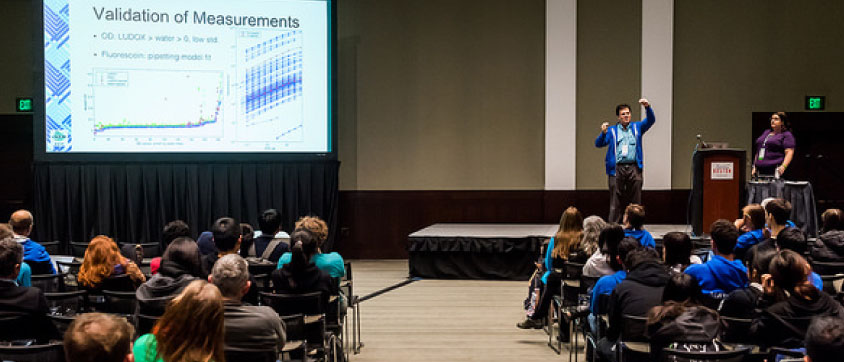Measurement Introduction
On this page you will find: Questions you might consider and Getting Started.


The public standard meter by Chalgrin located at 36, rue de Vaugirard, Paris, France. Image from Wikimedia Commons.
Good measurement is essential to ensure that work done by iGEM teams can be used by future teams and the community as a whole.
At iGEM, we believe that good measurements are the foundation on which scientific progress and societal impact are built. It is not enough to simply perform experiments or build DNA constructs, instead iGEM teams (and researchers in general) should carefully consider what aspects of a device/system need to be characterised, and the purpose of any experiments performed. It is also essential to realise that good measurement doesn't stop once an experiment has been performed; the way in which data is presented is also very important. Ensuring that appropriate data visualisation, statistical analyses, and units are used, along with careful and complete documentation of how the experiment was performed, will help ensure that future iGEM teams and researchers can make the most of your work.
Measurement should be considered early on in the design of a team's project, and should guide decisions as the project is executed. Teams can also engage in a wide variety of other measurement activities, including collaborating to test reproducibility, design new and better assays, and create low-cost instruments to make measurement more accessible.
The measurement aspect of a project is also an opportunity for team members to explore the twin questions of knowledge at the heart of science and engineering. How do we know what we know? How can we predict what will happen when we create something new? We must grapple with these questions if we wish to make responsible choices both as individuals and as a society, and the work done by iGEM teams is one of the many components of that effort.
The Measurement Hub aims to help guide you towards good measurement, provide useful resources, and help you make a bigger impact with your work.

Questions you might consider:
- How might you get feedback on the viability and reproducibility of your approach? How will you incorporate this feedback into your project design and execution?
- Which types of measurements are needed to validate your project? Are the instruments you have access to sufficient, and if not, how might you change your assay design?
- What is the effective range of measurement on your instruments, and how will you distinguish true signals from noise, artifacts, and confirmation bias?
- What are the physical units of your measurements, and how can they be calibrated to an independent standard?
- What sort of controls can you use to determine whether your experimental protocols are working correctly?
- How can your measurements be used in the design of other systems?



